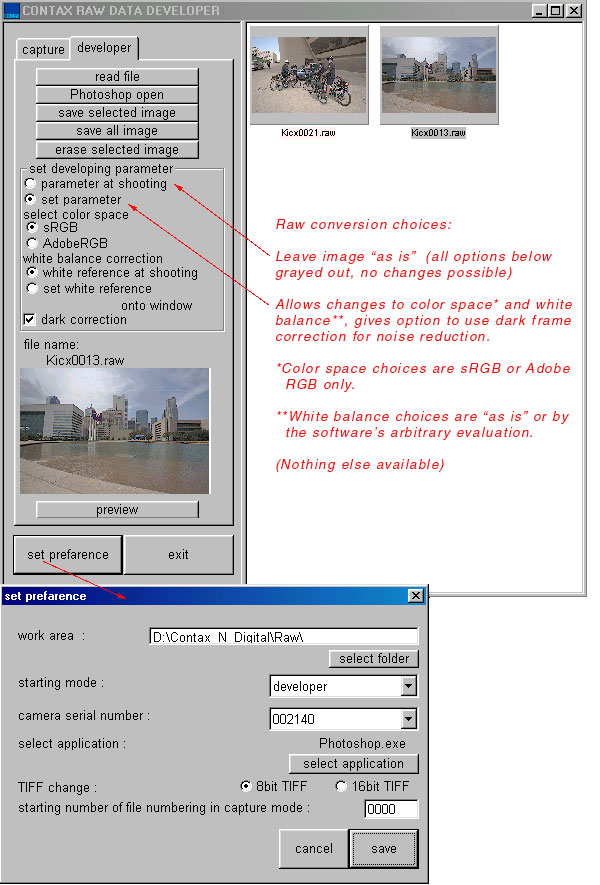|
|
|
Contax
N Digital "Like
good cooking, the results prove to be
better than fast food. The ingredients
are rich and flavorful... you just have
to know how to 'cook' & be willing
to take the time to learn what this
camera likes." Yes, the N
Digital requires a little more effort, skill,
and understanding than some
other cameras.
Some pictures require strong post-processing
skills to bring out the treasure beneath. But
like good cooking, the results prove to be
better than fast food. The ingredients are rich
and flavorful... you just have to know how to
cook, or be willing to take the time to learn. A
couple of special attributes have great appeal -
the full potential of wide angle lenses with the
full-frame sensor, and the added potential of
clean, rich, deep color saturation using
ultra-low ISO photography (as low as ISO 25).
In spite of many
opinions to the contrary, I personally
like the camera. Yes, I too had some
trouble with image quality (at first), but I
finally learned how to successfully use it...
and have fun with it. The key is in
the camera's setup ... here's what works for
me: Once I set up
the camera this way, I really enjoyed it. And
consistently produced top quality
pictures. Some
things work exceptionally well Great
Lenses
And the Zeiss
24-85mm zoom is a great portrait lens (sample
picture below).
ISO 25 helps
to produce rich, vibrant colors (sample picture
below). The
Good Shepherd
File
formats & sizes The N Digital
can be set to record images in 5 different
modes. All image modes are recorded at 3008 x
2008 pixels. Here are the 5 available formats
and their approximate file sizes: Jpeg1 is
the best all-around choice Jpeg1 format is
the best all-around option. With a low 1:4
compression ratio, the Jpeg1 format is fast,
efficient, and can produce high quality
pictures. Because it's fast, efficient, and
capable of high image quality, it makes the
camera fun to use. Practically
speaking, there is little or no visual
difference between an original in-camera 8 bit
Tiff image and an original 8 bit Jpeg1 image.
You'd have to look real hard to find any
difference in quality. (Most likely you
wouldn't.) The speed and convenience of Jpeg1
files give them a strong practical advantage
over in-camera Tiffs. And for "keeper" pictures,
original Jpeg1 files can be saved as 8 bit Tiffs
(which end up ~ 18 megabytes) in Adobe Photoshop
to retain maximum image quality. How about
the in-camera Tiff option? The in-camera 8
bit Tiff option is uncompressed, absolutely
lossless, and does provide an LCD review. That's
good. But the 18 MB files record too slowly and
take up too much space on a memory card for
practical use. How about
Raw format? Contax's Raw
format software is nearly useless. Why? Because
the most important advantage to shooting "raw"
is the ability to reset exposure compensation
and white balance after the fact. And you can't
do either with Contax's Raw Data Developer
software. I like to shoot
Raw format with Nikon, Kodak, & Canon
digital SLRs because of the wide variety of
post-shooting adjustments that their processing
software provides - exposure compensation,
sharpening, tone, white balance, and other
corrections after the fact. In my way of
thinking, Raw should allow me to shoot with my
camera set up on "automatic everything", and
should give me the opportunity to make these
kinds of basic changes afterwards if the camera
didn't do it right the first time. That's the
beauty of Raw. Even though the
Contax N Digital does offer a Raw option,
the post-shooting software adjustments are too
limited for practical use. Here's what it can
& can't do: The only good
thing I've found about Contax's Raw software is
that it come "free" with the camera (USA
Model). **
Update: Adobe
Photoshop CS & newer versions (which were
not available at the time of this review)
includes Contax N Digital Raw support and can do
the industry-typical full range of Raw
adjustments. Below:
Screenshot of Contax's "Raw Data Developer" Raw
file conversion software with some annotations
I've added about the setup &
options. No LCD
review in Raw mode Like other
digital SLRs, the N Digital has a record &
review mode as well as an image playback mode so
you can see what you've taken... except in Raw
mode. That's right, the N Digital does
not have an LCD screen review available
to see your Raw images. You only get a blank
blue screen that says "RAW" with a reference
file number shown in the corner of the LCD
screen. There's no way to check scene
composition, no histogram, nothing. And without
the capability of an on-camera LCD review, Raw
becomes handicapped even more. The only
possible advantage I can see to using Raw in the
N Digital is having a lossless file that can be
converted to a 16 bit Tiff. If a big, fat 16
megabyte Tiff that you can work over in
Photoshop is important to you, fine. Other than
that, it's a lot more trouble than it's
worth.
Flash
photography problems TTL flash
photography is hit & miss, with more misses
than hits. TTL flash exposure is difficult to
get right for any digital camera manufacturer
because of the additional reflectivity of the
digital sensor compared to film, and it looks
like Contax didn't spend much time in this
department. Getting a good flash exposure is a
case-by-case trial & error process of
adjusting speedlight settings on the fly and
checking the LCD screen after every shot. Yes,
you can get good flash exposures, but it takes
some work and special
attention.
Technical
overview Technical
specifications |
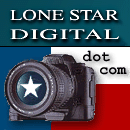
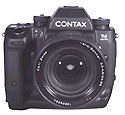
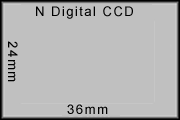
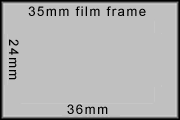
.jpg)
.jpg)
.jpg)
